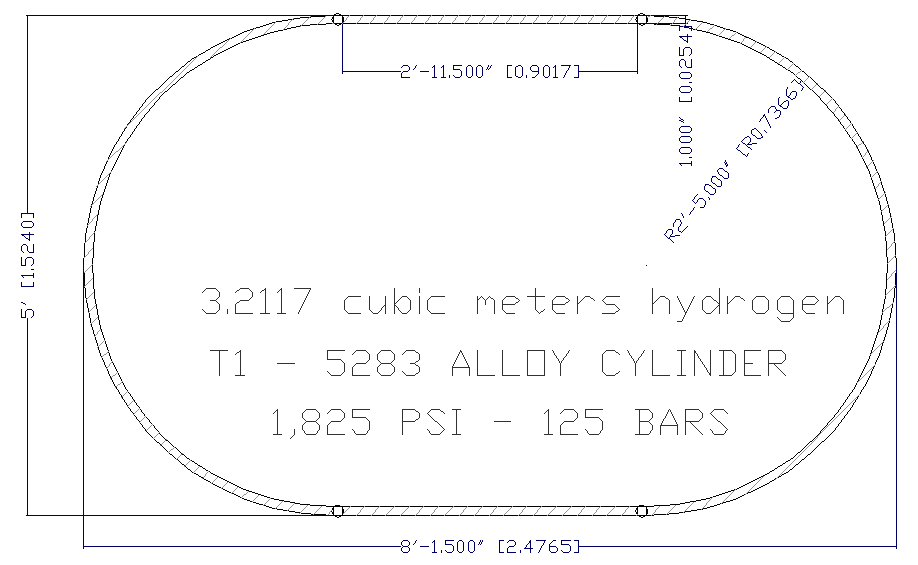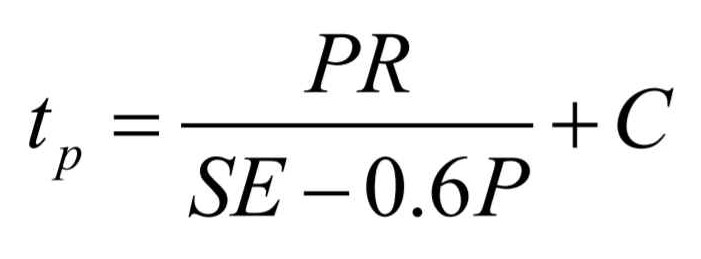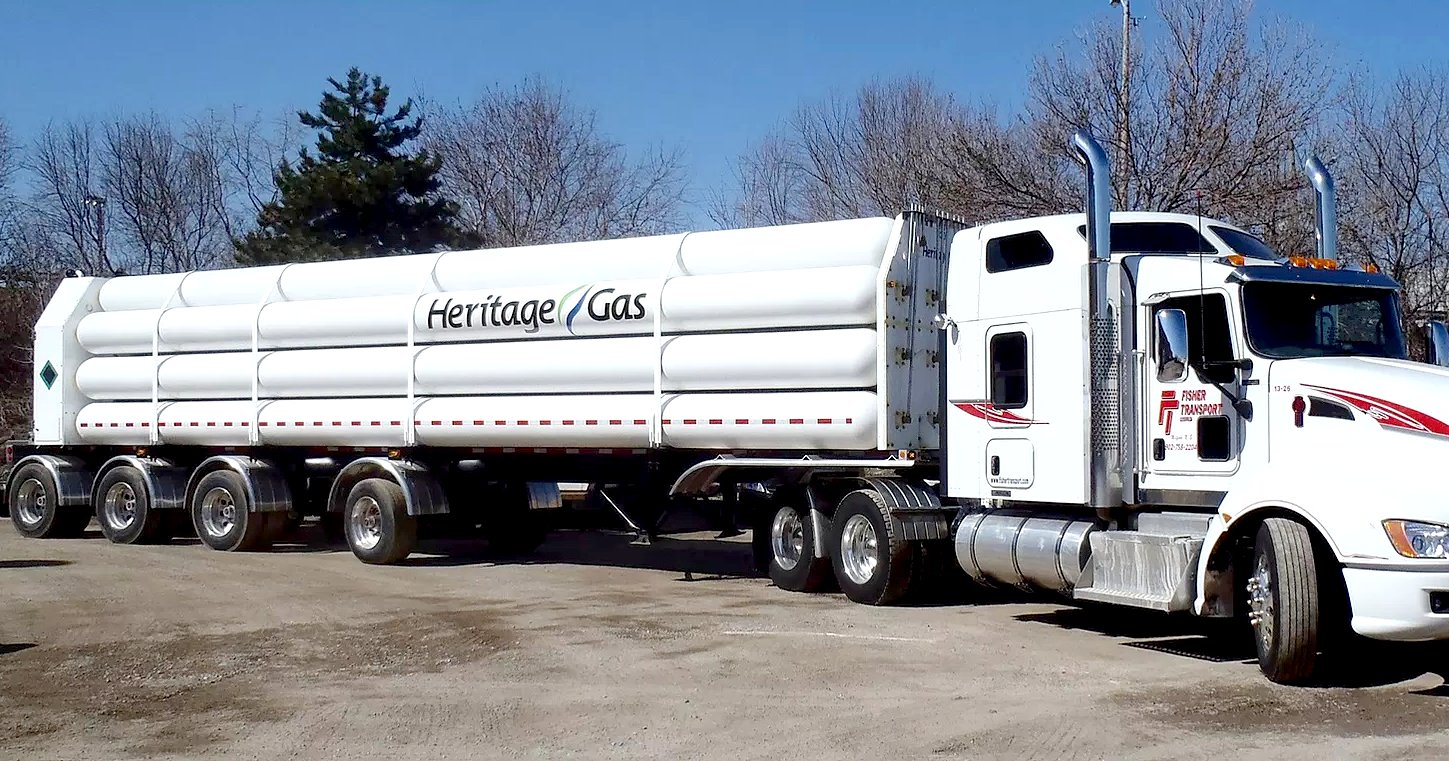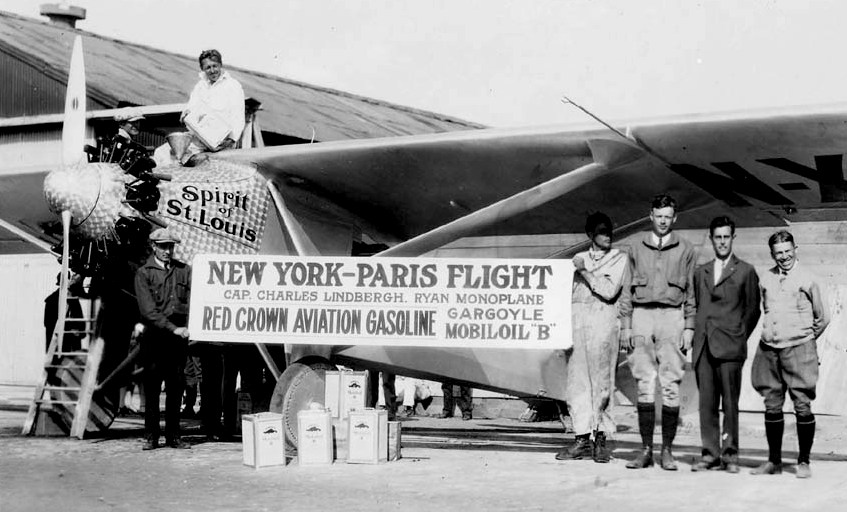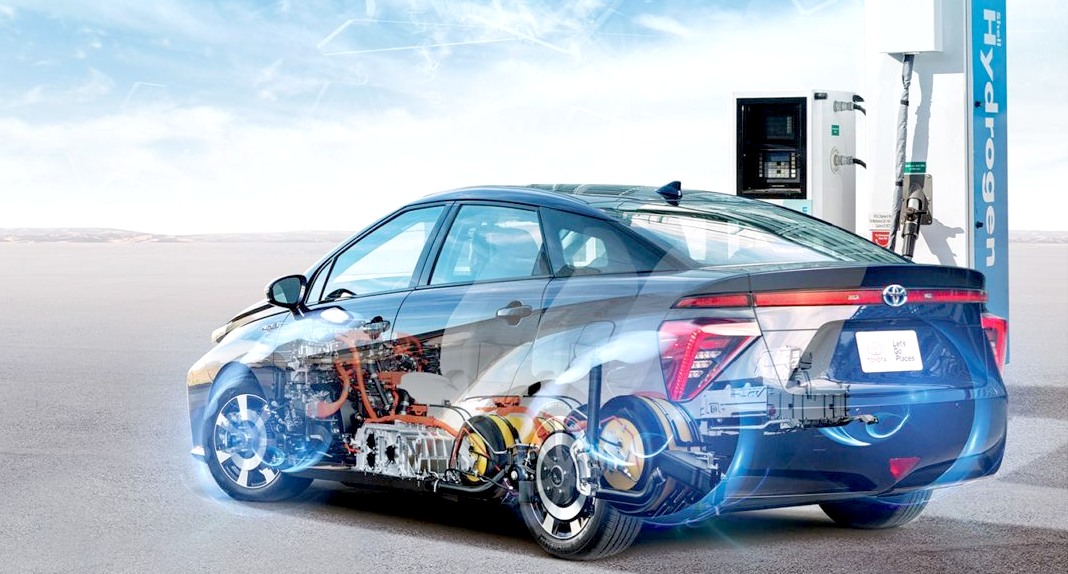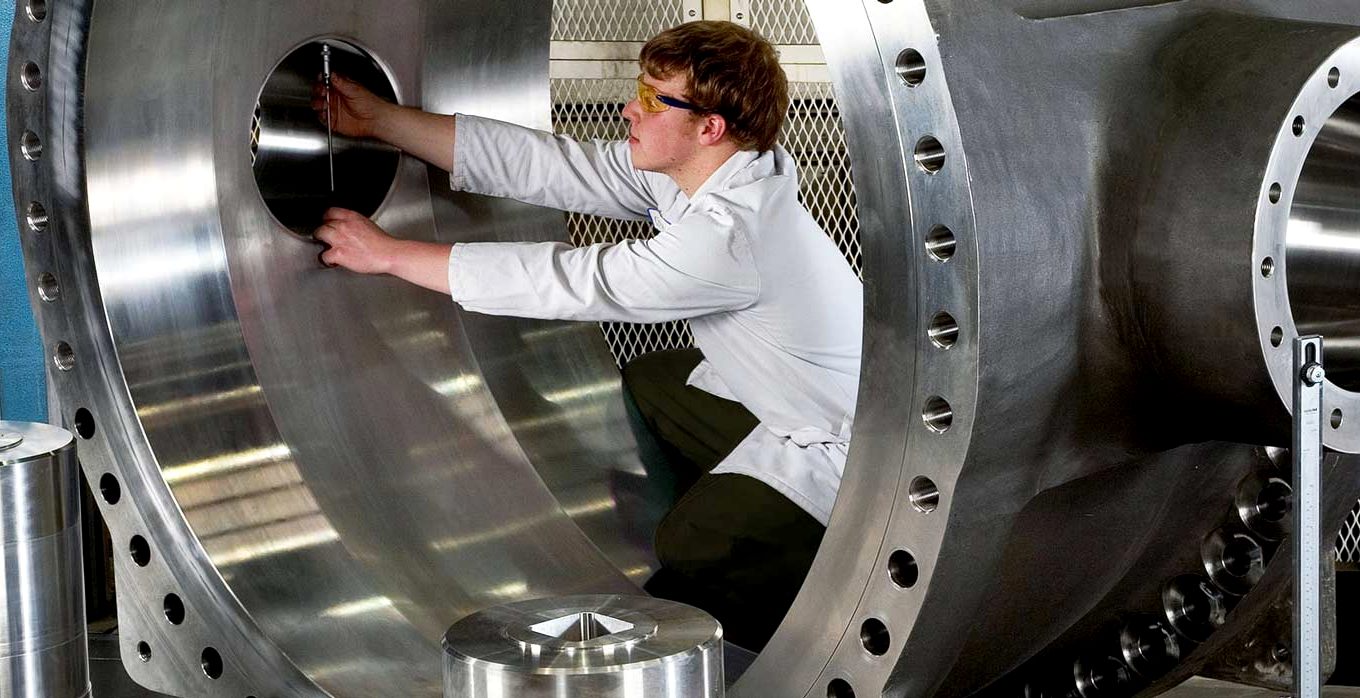|
HYDROGEN - MASS STORAGE CYLINDERS 125 BAR
Please use our A-Z INDEX to navigate this site or return HOME
|
||||||||||||||||||||||||
|
CONTENDER - Twenty-four of these little beauties should give us a 3,500 nautical mile range, with a little to spare. In the quest for zero emission waterborne transport, solutions like the present proposed, might be scaled up for ferries, and eventually cargo ships. But, thinking conventional ship hulls, is not the way we see it happening. It's not a sphere, but the cylinder length compared to the diameter ends is very short. Meaning that the wall thickness might be reduced. The cylinder is shown without fittings. The Elizabeth Swann's hull is ideal for cylinders like these - in either aluminium or titanium (for ammonia). The surface area of this cylinder is: 14.40m. Hence mass of high tensile alloy @ 20mm shell thickness x 24 units = 18 tonnes. At 15mm = 13.7 tonnes. It all depends on the strength of the alloy and how thin we dare go with the walls. (Wall thickness in diagram shown as 25mm) A sphere can use roughly half as much material for walls, as a cylinder, in theory. If using liquid hydrogen, it might be possible to circumnavigate the world on one tank-full. These figures are only ballpark. Development costs for specially produced cylinders like this can run into $hundreds of thousands of dollars, not being available off the shelf, and certainly something that Governments need to consider when formulating calls for proposals and the like. Indeed, they may wish to fund the cost of such R&D directly by way of contracts. Such cylinders are typically forged and seamless. Spherical ends require considerable tooling to produce.
Naval architects are struggling to find safe mass storage solutions for cargo and cruise ships, hence the EU's call for proposals: ZEWT HORIZON-CL5-2021-D5-01-07. Most are headed towards multiples of Type IV composite cylinders and proportionally higher operating pressures. We can see why. It is the obvious choice if trying not to alter existing hull designs. Why change if you don't have to. Modern ship hulls are a very efficient way of moving goods around the world. The investment in a new ship is staggering, depreciated over some 15-21 years. Our thanks go out to all fleet operators for their service to the international community.
We are not bound by commercial constraints, and do not have a fleet of ships, we simply want to prove that oceans can be navigated on solar power and/or hydrogen as a fuel. As a clean sheet of paper approach, our proposed configuration, comprising 24 of the cylinders above - will give us 21,168kWh in energy storage, from hydrogen in gaseous form @ 75 bars. This can be increased by raising cylinders pressure to 1,825psi (125bar), to carry 866.25kg of hydrogen (29,106kWh). That should see us raise the (endurance) Atlantic electric water speed record to 7.5 knots - from the at present 5.5 knots, set by PlanetSolar in 2012.
The size chosen has several advantages, provided they can be manufactured, and at a competitive price. The concept is open to developmental change, should for example, tweaks yield a better solution. For example, liquid hydrogen offers twice the energy carrying capacity per litre, but wastes a lot of energy to produce. Though is still sustainable in the grand scheme of things, with the abundance of on and offshore wind turbine farms, provided that the lack of hydrogen bunkering at ports and harbours is resolved in fairly short order. Something, the Foundation may only suggest, as an SME, in the hope governments run with the torch.
The density and tensile strength of a material, determines the performance of an all metal cylinder. The density of steel (chrome, vanadium, molybdenum) is around 7.85 g/cc. Steel is the backbone of the shipping industry. Without it we would not have the luxury floating palaces and giant cargo ships at current build prices. An all aluminium ship would cost much more, but have a longer working life.
Talking of costs, tooling up to produce the (proposed) cylinders above, will require significant investment, adding considerably to the cost of an Elizabeth Swann with such specification. Meaning that it is unlikely to happen as a project, unless and until, global warming really hits home.
The good news is that the standard hull of the Swann, is good to store 40kg of hydrogen. A useful backup as we decide to include compressor, electrolyzer and fuel cells.
DENSITY OF METALS USED FOR PRESSURE VESSELS
TYPE 1 SHELL THICKNESS WORKING EQUATION
The necessary 'Shell' thickness of pressure vessels is a function of the ultimate tensile strength of the metal at operating temperature, operating pressure, vessel diameter and welding joint efficiency (Peters et al, 2004).
In the American Society of Mechanical Engineers (ASME) Code (VIII-I), the working equation for the determination of shell thickness of cylinder subjected to internal pressure based on inside diameter is given as:
Where:
1. tp less than or equal to 2R,
and
CLASSIFICATION OF CYLINDERS
Type 1 (I) – Full metal: Cylinder is made entirely from metal.
Type 2 (II) – Hoop wrap: Metal cylinder, reinforced by a belt-like hoop wrap with fibre-reinforced resin.
Type 3 (III) – Fully wrapped, over metal liner: Diagonally wrapped fibres form the load bearing shell on the cylindrical section and at the bottom and shoulder around the metal neck. The metal liner is thin and provides the gas tight barrier.
Type 4 (IV) – Fully wrapped, over non-metal liner: A lightweight thermoplastic liner provides the gas tight barrier, and the mandrel to wrap fibres and resin matrix around. Only the neck which carries the neck thread and its anchor to the liner is made of metal, which may be lightweight aluminium or sturdy stainless steel.
T1 containers used to bulk transport hydrogen by truck, are the option explored on this page. All metal storage tanks are the least expensive to manufacture. They are fabricated as a rolled metal cylinder (aluminium, stainless & other high tensile steels), seam-welded, and can be very large.
TUBE
TRAILER - 13 jumbo tubes
= Water Volume: 1011 cubic feet (77.769 ft3 per cylinder) Standard Cubic
Feet (SCF)
Aircraft had the same fuel tank problem, overcome by the likes of Louis Bleriot, where he crossed the English Channel in July 1909, in his XI, making distance over water records newsworthy and fashionable. You may not think the Channel was such a daredevil stunt, but then Charles Lindbergh came along with his Sprit of St. Louis NYP in May 1927 - basically, a monoplane converted to a giant fuel tank, to cross the Atlantic from New York to, some 3,600 miles. Before his Atlantic attempt, two other pilots attempting the same feat vanished without trace, underscoring the dangers. The Elizabeth Swann, cannot run out of fuel. If the hydrogen runs out, we simply switch to solar power.
CHARLES LINDBERGH - Flying over the Atlantic and Pacific may seem routine now, but when the Sprit of St. Louis took to the air, even with the flying skills of Charles Lindbergh, it was unclear if he would have enough fuel to complete the flight.
Commercial aircraft use their wings as integrated fuel tanks, killing two birds with one stone. On many aircraft, especially transport category and high performance aircraft, part of the structure of the wings or fuselage is sealed with a fuel resistant two-part sealant to form a fuel tank. The sealed skin and structural members provide the highest volume of space available with the lowest weight. This type of tank is called an integral fuel tank since it forms a tank as a unit within the airframe structure.
Integral fuel tanks in the otherwise unused space inside the wings are most common. Aircraft with integral fuel tanks in the wings are said to have wet wings. For fuel management purposes, sometimes a wing is sealed into separate tanks and may include a surge tank or an overflow tank, which is normally empty but sealed to hold fuel when needed.
The same principles may be applied to shipping. This is especially important, when considering gas at pressure, or other fuels that present storage issues. Ammonia being caustic and liquid hydrogen being cryogenic.
TOYOTA MIRAI - This famous OEM has gone all out to produce a technological marvel. Without innovative engineering, we'd not be able to develop these works of art. Without our industry to give us the manufacturing muscle for mass production, the ordinary man in the street, would never be able to enjoy such motoring miracles at affordable prices. We are attempting to do the same for the yachting world. It was Henry Ford who gave us the production line.
SOME USEFUL INFORMATION
One liter of hydrogen gas weighs only 90 mg under normal atmospheric pressure.
It is 11 times lighter than the air we breathe.
1kg of hydrogen = 33.6kWh of energy
Atmospheric pressure is roughly 14.6959 pounds per square inch, or 1 bar. Also called barometric pressure. The 'atm' unit is roughly equivalent to the mean sea-level atmospheric pressure on Earth.
For divers, at a depth of roughly 30ft of water, doubles the pressure to 2 atm. Diver's watches are typically 20 atms tested.
|
||||||||||||||||||||||||
|
ZEWT ALORS - The solar and wind powered 'Elizabeth Swann' will feature solar collectors and wind energy harvesting apparatus in an advanced configuration. Her hull configuration is ideal for mass hydrogen storage tanks, offering ranges of up to 4,000nm.
|
||||||||||||||||||||||||
|
A-Z
INDEX OF H2 POWERED FUEL
CELL SHIPS
LINKS & REFERENCE
https://
|
||||||||||||||||||||||||
|
Please use our A-Z INDEX to navigate this site or return HOME
This website is Copyright © 2021 Jameson Hunter Ltd
|
